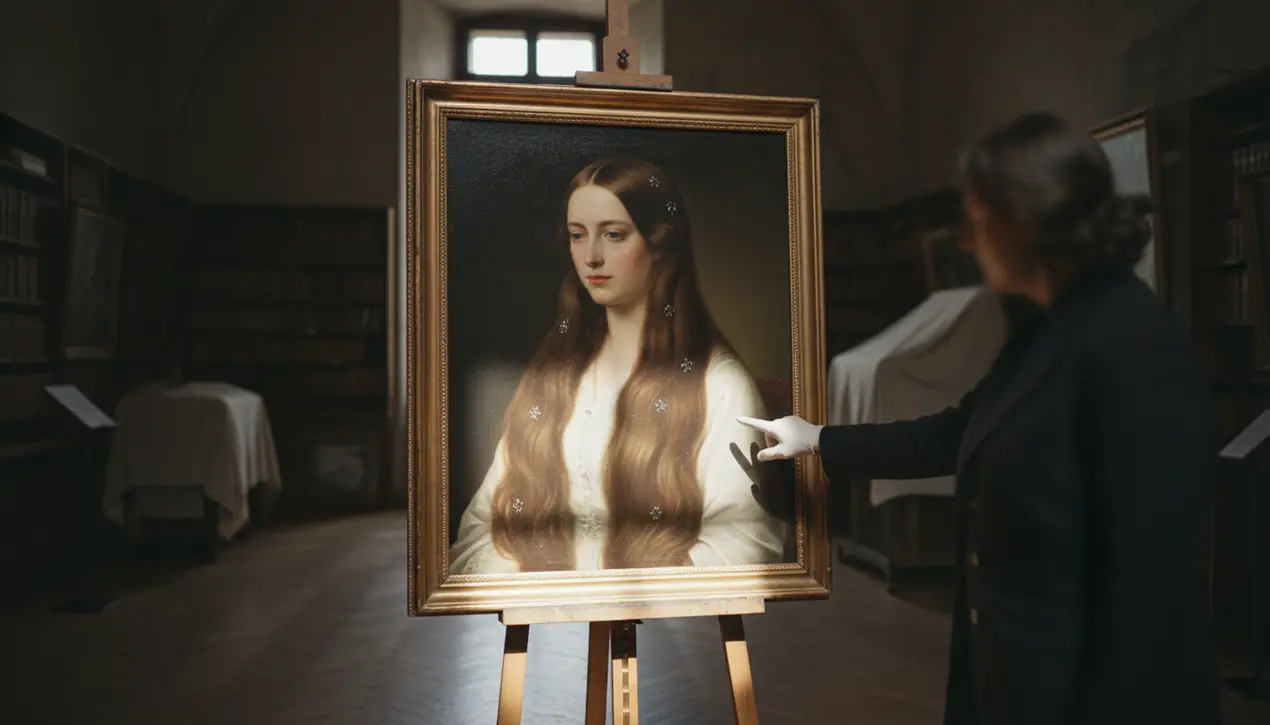
Entertainmenttheatre & arts
Portrait of Empress Elisabeth's famous hair gains new attention.
AM
Amanda Lewis
22 hours ago7 min read5 comments
The 19th-century portrait of Empress Elisabeth of Austria, an icon of Habsburg beauty and melancholy, is experiencing a remarkable resurgence in public consciousness, largely propelled by a pivotal scene in Guillermo del Toro's acclaimed new cinematic interpretation of 'Frankenstein'. This isn't merely a case of a painting appearing in the background; del Toro, a master of visual storytelling known for his symbolic depth, uses the portrait to underscore themes of constructed perfection, profound isolation, and the monstrous nature of public scrutiny—themes that tragically mirrored the Empress's own life.Elisabeth, known affectionately as Sisi, was arguably the 19th century's most famous royal, a figure whose existence was as meticulously curated and painfully confined as a work of art itself. Her legendary chestnut-brown hair, so lavishly depicted in the portrait, was not just a feature of beauty but a central pillar of her identity and her prison; it cascaded to her ankles, requiring hours of daily maintenance in a dedicated chamber, a ritualistic ordeal that consumed up to three hours.This daily performance of hairstyling, often described as a courtly ceremony, was a testament to the oppressive expectations placed upon her, where her physical self became a political asset and a source of immense personal anguish. The portrait, therefore, is more than a likeness; it is a complex document of celebrity, gender, and power in a gilded age.It captures the facade of the fairytale princess while silently screaming the constraints of her gilded cage. Her famed fitness regimen, her poetry, and her extensive travels were all acts of rebellion against the strictures of the Viennese court, which she despised.Art historians now re-examine the painting through this modern lens, seeing not just a beautiful woman but a narrative of a soul battling against the monstrous creation of her own public image—a narrative del Toro intuitively connects to the Frankenstein mythos. The film’s use of the portrait suggests a parallel between the Empress, a human being stitched together by the demands of dynasty and public spectacle, and the Creature, an assembly of parts yearning for understanding. This cultural moment invites us to look past the gleaming surface of the hair, past the flawless complexion, and into the eyes of a woman who was, in many ways, Europe's first modern celebrity, whose life ended in tragic assassination, a final, brutal act in a story that continues to captivate and reveal new layers, proving that great art, whether on canvas or on film, never truly dies but waits for the right moment to be reanimated.
#Empress Elisabeth
#portrait
#hair
#art history
#Guillermo del Toro
#Frankenstein
#featured
Stay Informed. Act Smarter.
Get weekly highlights, major headlines, and expert insights — then put your knowledge to work in our live prediction markets.
Comments
Loading comments...
© 2025 Outpoll Service LTD. All rights reserved.